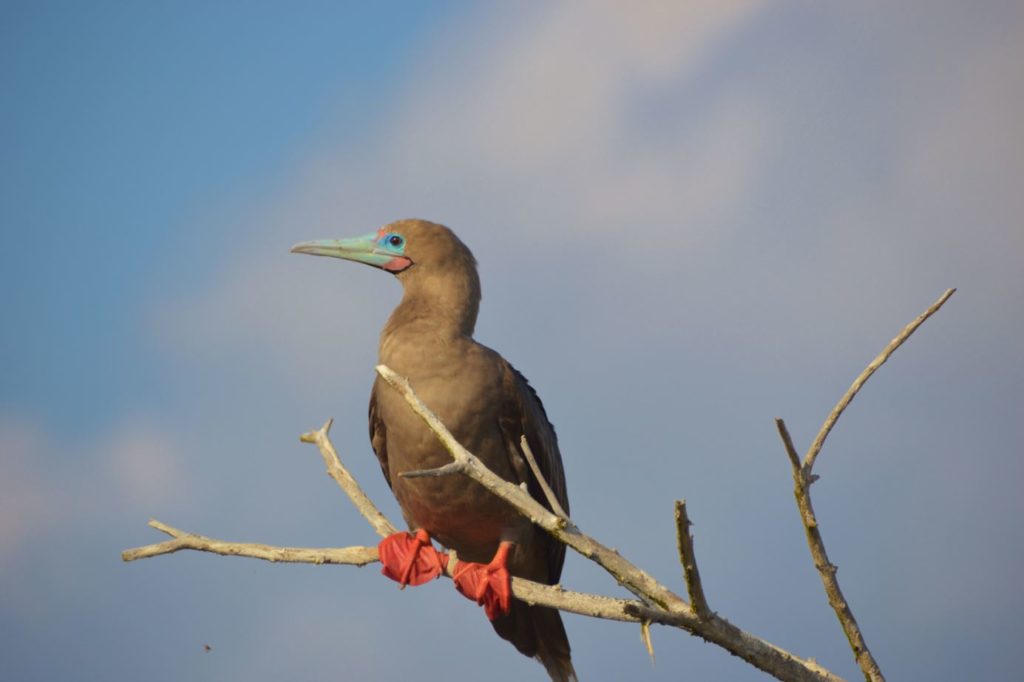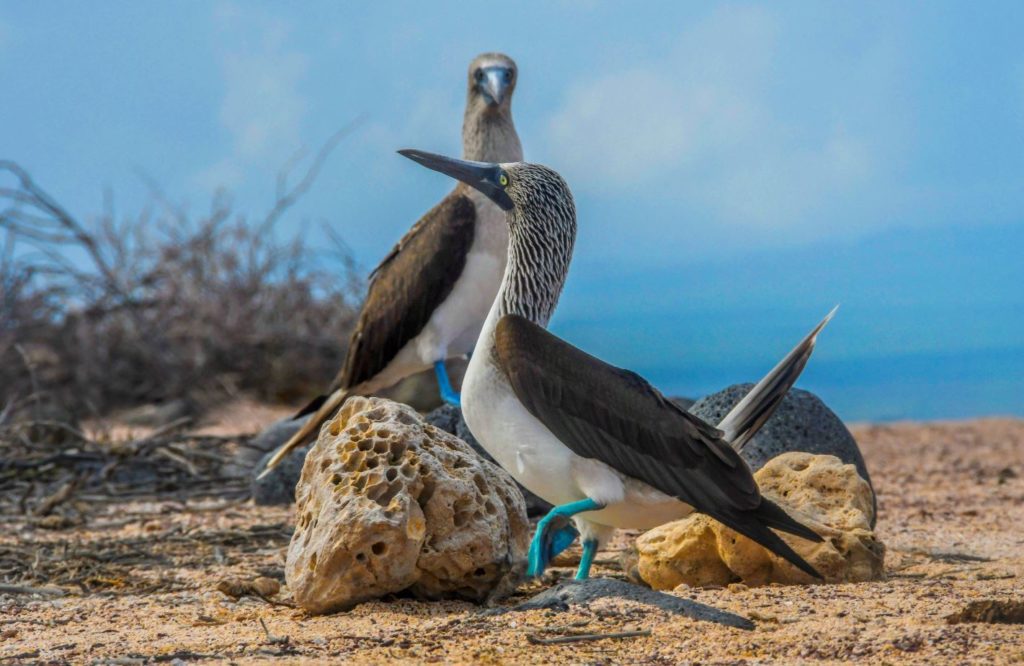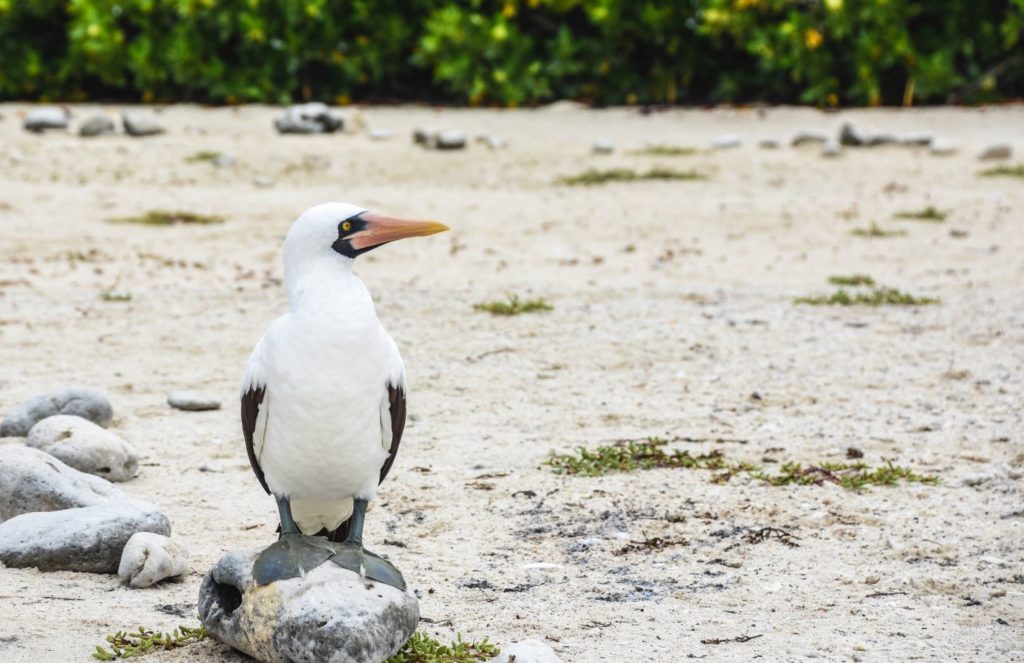The three types of boobies found in the Galapagos Islands
You can familiarize yourself with the wildlife you must see on the Islands before setting out on your Galapagos tour. While the majority of people might believe that visiting a giant tortoise or a marine iguana is impossible, there are a few birds—more significantly, those that are unique to the Galapagos Islands, such boobies—that you might want to add to the list.
If you’ve ever wondered why a type of bird was given the name “boobies,” it was derived from the Spanish word “bobo,” which means clumsy. This was due to the reference to the hilarious gait of boobies. The Galapagos Islands are home to three different species of boobies, but it’s often simple to tell them apart because of their unique coloring. It is well worth the journey to the Enchanted Isles to witness these fascinating and captivating species found throughout the archipelago. The most intriguing information regarding each Galapagos booby can be found here.
TALK TO A DESTINATION EXPERT

Diego Zapata

Rosa Mena

Sandy Lara

Diego Zapata

Rosa Mena

Sandy Lara
Remember that some of these boobies can only be spotted on certain islands in the Archipelago. A Galapagos cruise is the best way to guarantee that you’ll see the red-footed, blue-footed, and Nazca boobies on the same trip.
Red-footed Booby

Despite being the tiniest booby in the Galapagos Islands, the red-footed booby (Sula sula) more than makes up for its diminutive stature with excellent aerial and aquatic skills. In addition to being able to soar over the ocean for up to 93 miles (150 km), red-footed boobies are also highly proficient at swooping prey in the water. With their keen vision and exceptional diving skills, they can dive as deep as 130 feet (40 meters) and catch almost every kind of fish.
These boobies can swim even faster and propel themselves underwater when they see fish from above, thanks to their distinctive red webbed feet. Red-footed boobies genuinely perch on Galapagos plants, much like birds with distinct digits do, in contrast to other web-footed creatures. In the Galapagos, red-footed boobies can be seen near Punta Pitt on San Cristobal Island (Eastern Itinerary) and on Genovesa Island (Northern Itinerary).
Blue-footed Booby

The turquoise feet of blue-footed boobies (Sula nebouxii) make them possibly the most well-known species of booby. Their unique color is a result of their highly picky diet. The color of their feet may captivate many, but it is a much more significant feature of the blue-footed boobies’ mating ritual. The man will be more alluring to the female the more turquoise his feet are. Their endearing wooing custom includes an odd dance where the man alternately displays each foot. The female typically imitates the male’s moves in response to the dance. However, their mating ritual goes on. When a female blue-footed booby agrees to mate, they will clack their bills, whistle, grunt, and continue the dance. If not, they will turn around and depart for additional turquoise feet.
In addition, blue-footed boobies are renowned for their incredible flight and aquatic abilities. They can see small fish from great altitudes, including sardines, anchovies, and mackerel, and dive at much to 60 mph (96.5 kph).
Like most of the archipelago’s wildlife, blue-footed boobies have adapted to live without predators in the Galapagos Islands, so they don’t fear humans. Blue-footed boobies can be seen on practically all the Galapagos Islands.
Nazca Booby

The largest of the three boobies in the Galapagos, the Nazca booby (Sula grant), resembles its relative, the masked booby, in appearance. Their orange beak, black-tipped feathers, and very white plumage are distinguishing characteristics. Its obligatory siblicide, however, is what sets this booby apart from the other two that may be found in the Galapagos. This indicates that Nazca boobies often lay two eggs spaced a few days apart. Typically, one hatchling will kick the other out of the nest to prevent them from vying for food. The smaller and weaker chick is left to starve to death.

Javier Garcia

Eduardo Silva

Carolina Escobar
START PLANNING YOUR TRIP

Javier Garcia

Eduardo Silva

Carolina Escobar
Get in touch for more
CONTACT US
The most perplexing of parasitic inclinations also preys on Nazca boobies: vampire finches. These animals have mastered the art of pecking at Nazca boobies to find parasites, eventually consuming the boobies’ blood as food. This kind of behavior emerges when there are few other food sources available.


